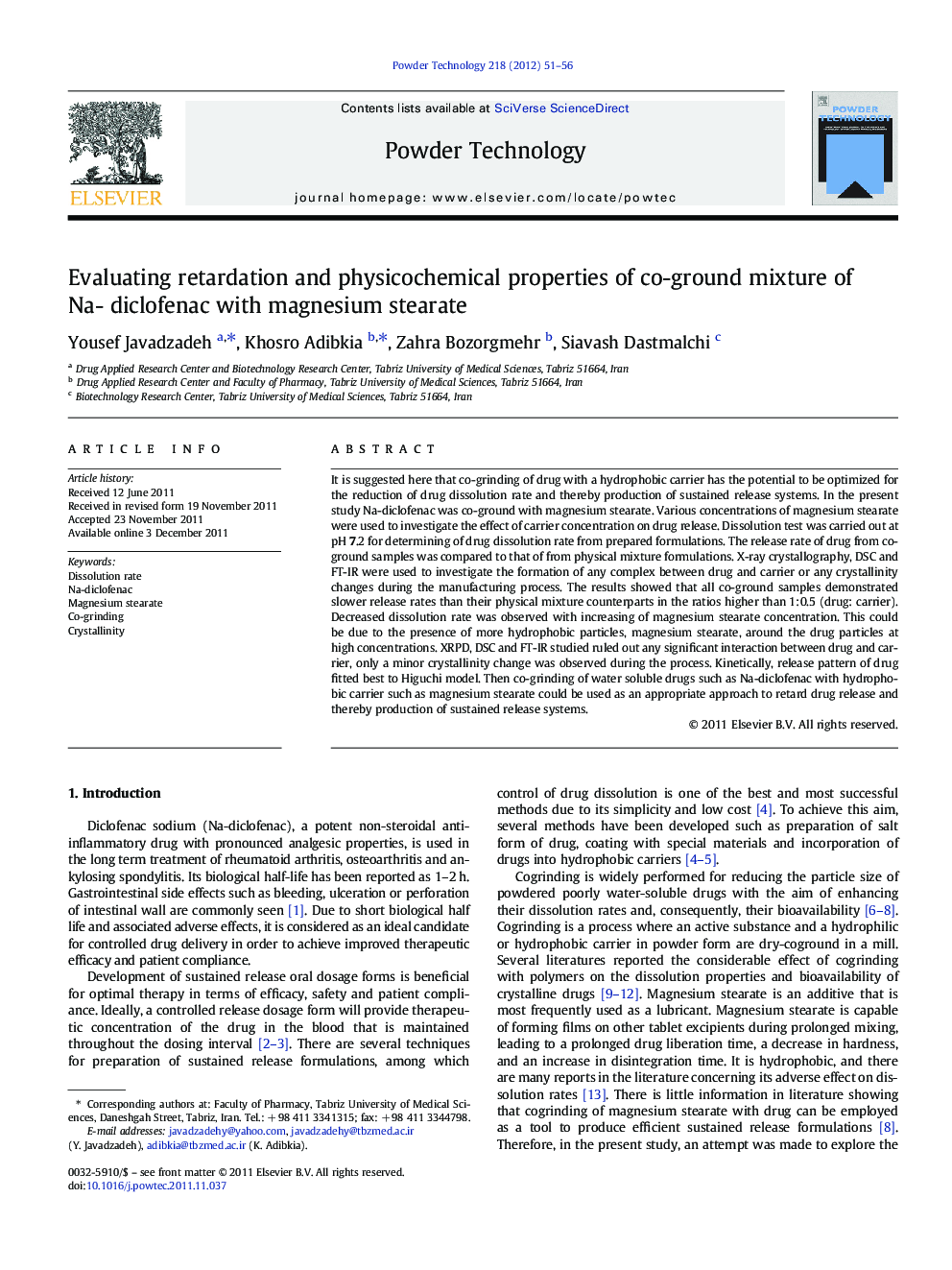| Article ID | Journal | Published Year | Pages | File Type |
|---|---|---|---|---|
| 237349 | Powder Technology | 2012 | 6 Pages |
It is suggested here that co-grinding of drug with a hydrophobic carrier has the potential to be optimized for the reduction of drug dissolution rate and thereby production of sustained release systems. In the present study Na-diclofenac was co-ground with magnesium stearate. Various concentrations of magnesium stearate were used to investigate the effect of carrier concentration on drug release. Dissolution test was carried out at pH 7.2 for determining of drug dissolution rate from prepared formulations. The release rate of drug from co-ground samples was compared to that of from physical mixture formulations. X-ray crystallography, DSC and FT-IR were used to investigate the formation of any complex between drug and carrier or any crystallinity changes during the manufacturing process. The results showed that all co-ground samples demonstrated slower release rates than their physical mixture counterparts in the ratios higher than 1:0.5 (drug: carrier). Decreased dissolution rate was observed with increasing of magnesium stearate concentration. This could be due to the presence of more hydrophobic particles, magnesium stearate, around the drug particles at high concentrations. XRPD, DSC and FT-IR studied ruled out any significant interaction between drug and carrier, only a minor crystallinity change was observed during the process. Kinetically, release pattern of drug fitted best to Higuchi model. Then co-grinding of water soluble drugs such as Na-diclofenac with hydrophobic carrier such as magnesium stearate could be used as an appropriate approach to retard drug release and thereby production of sustained release systems.
Graphical abstractEffect of Mg-stearate concentration on Na-diclofenac release.Figure optionsDownload full-size imageDownload as PowerPoint slideHighlights► Coground mixtures of Na-diclofenac with Mg stearate are able to retard drug release. ► Mg stearate concentration has significant effect of release profile. ► XRPD, DSC and FT-IR studied ruled out any interaction between drug and carrier.
